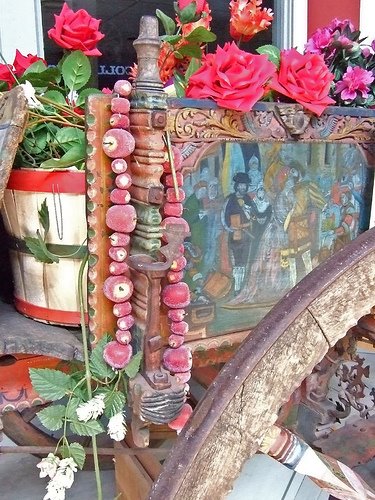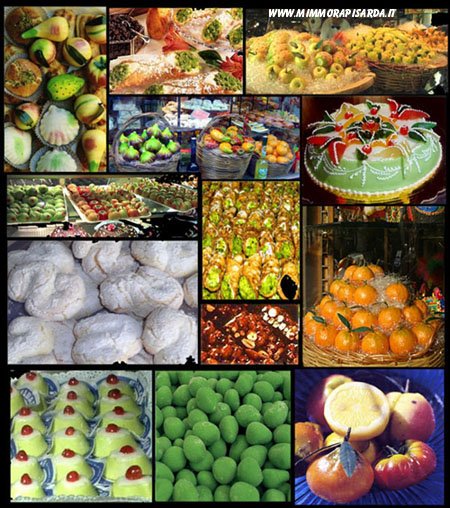
Constructed by Ruggero II between 1075 and 1090, the Castle of Carini is superbly positioned atop the highest rock of the hill. Stately and unconquered from the North side, while looking down on a strong and imaginary enemy already defeated, it is outlined against the blue sky during the day as if it were at the outer limits of the universe, while its silhouette against the dark night sky makes one shiver with fear as if it were a Shakespearean Castle.
It was here, in this Castle, on one clear morning of December 1563, in contrast to the beauty of that day, the limpidity of the sky, the green of the hills and the mountains, that the Baroness of Carini fell victim to the murderous fury of her father, to the blind rage of a father cruel and inhumane. This is according to the story that the unknown poet tells us throughout his poem.
This deed of blood spilt would have been lost in the darkness of time, if this poet, had not romanticised that tragedy of the Talamanca-La Grua family, giving us, at the same time, one of the most beautiful poems of the Sicilian literature.
This deed of blood spilt would have been lost in the darkness of time, if this poet, had not romanticised that tragedy of the Talamanca-La Grua family, giving us, at the same time, one of the most beautiful poems of the Sicilian literature.
"The fine lily, that spreads its scent, immersed in its own leafage, it wants to soothe the worries of love... and it doesn't answer these cares; but inside powerful ardours blaze. She goes dreamy and all confused...and always that the reason has no value, that so love rules everybody" Read more
A poem full of humanity, compassion, true sorrow, and poetic beauty, making us forget that we really do not know the true story of the tragedy that hit the Talamanca-La Grua family in that distant year of 1563, and helps us in empathising with the pain of that great loss. One thing is certain, even if now we are in the most mature stage of the Humanism, no rights existed in the human and civil history of man.
The feudal system is in full flow and the people are subject to injustice and barbarism. These are endured not only by the subjects at large but impose themselves on every social rank to the point that the dreams of young people were exchanged as mere merchandise; in fact weddings were arranged by families based on political motives, keeping in sight the social rank and power together with the price (how much they owned) of the candidates, without any regard at all to the spiritual welfare nor the feelings of those candidates.
The news (of the death of the Baroness) caused reverberation all over Sicily: It caused astonishment, wonder, gossip and sorrow. It is in the intrinsic ties of pain with the Sicilian soul from whence rises the unknown voice that cries, threatens, condemns, and at last, takes vengeance over the brutality, haughtiness, insensibility and hypocrisy of the feudal system. It is the suppression of the individual liberty by the feudal tyranny and the bondage of the values held most dear to man that the voices rise up.
In the case of the "Baroness of Carini" it is the ineffable pain of the loss of the beautiful Castellana that makes the Sicilian language flourish in all its splendour. As the story goes, in 1563 the very beautiful daughter of Count Mussomeli, Laura Lanza, bride of Don Vincenzo La Grua, falls in love with Ludovico Vernagallo who reciprocates her affection. Her father, desiring to protect the honour of the family name, attempts to end to this dalliance, but it is the love which is between them that resists all attempts.
The count, Laura's father, was pitiless and murders them both in order to ensure that the honour of the family has been protected. In the passing of time the episode has assumed colours of legend and has become one of the most favourite subject of poets and ballad-singers.
With a splendid view of the coast, Carini leads along Corso Umberto I to the horseshoe-shaped stairs surrounding the mediaeval fountain of the abbey.
Having climbed the stairs and passed beneath the 12th century arch, you will come to the old hamlet and the Castle.
How to get there :
Only 20 km from Palermo, to reach Carini is very easy : Simply follows the A29 motorway toward Trapani-Mazzara del Vallo. Exit Carini. Then follow the SS113 and turn left to SP3 - A scenic drive will bring you up on a hill, where Carini is nestled.







No comments:
Post a Comment